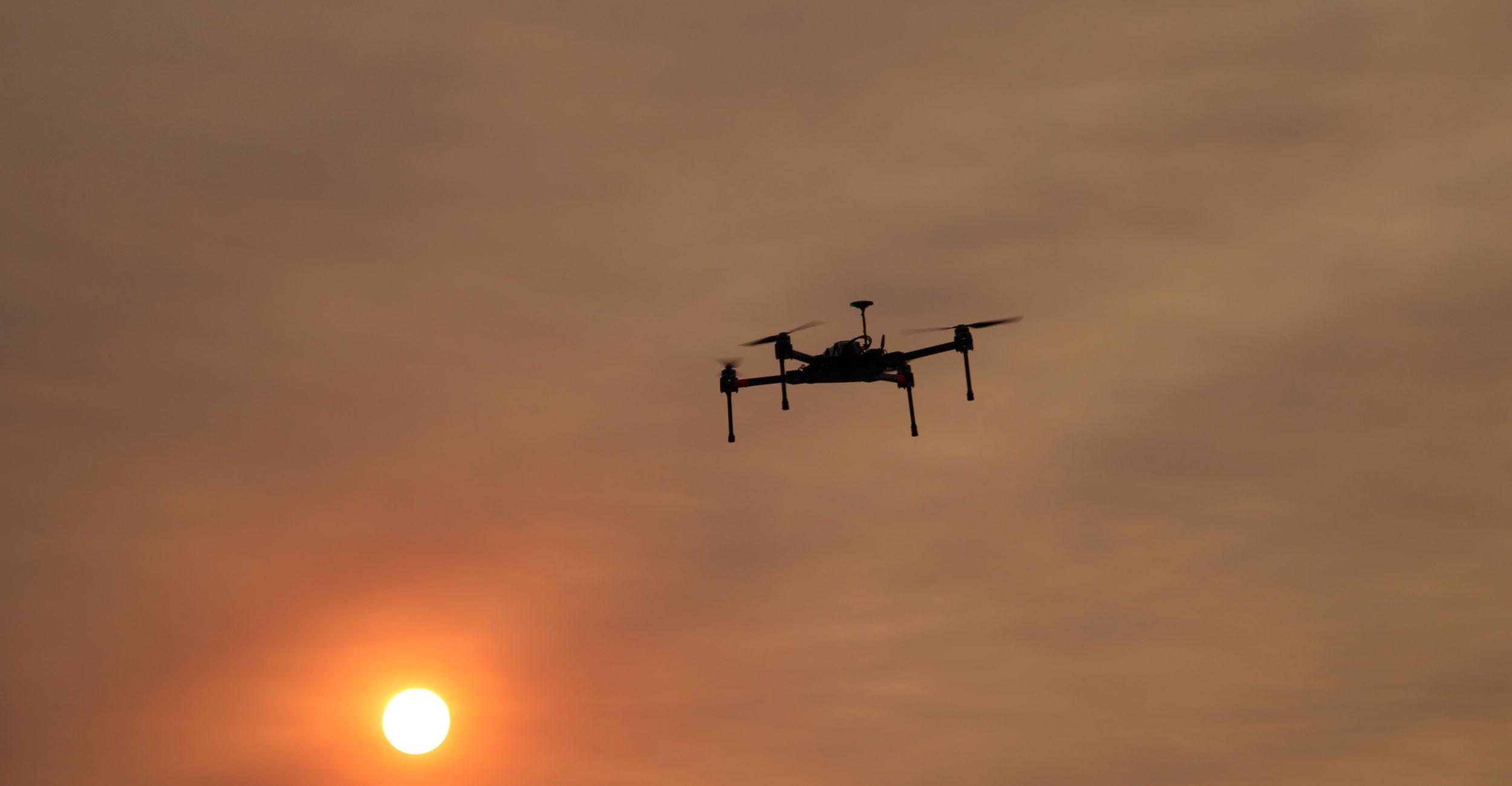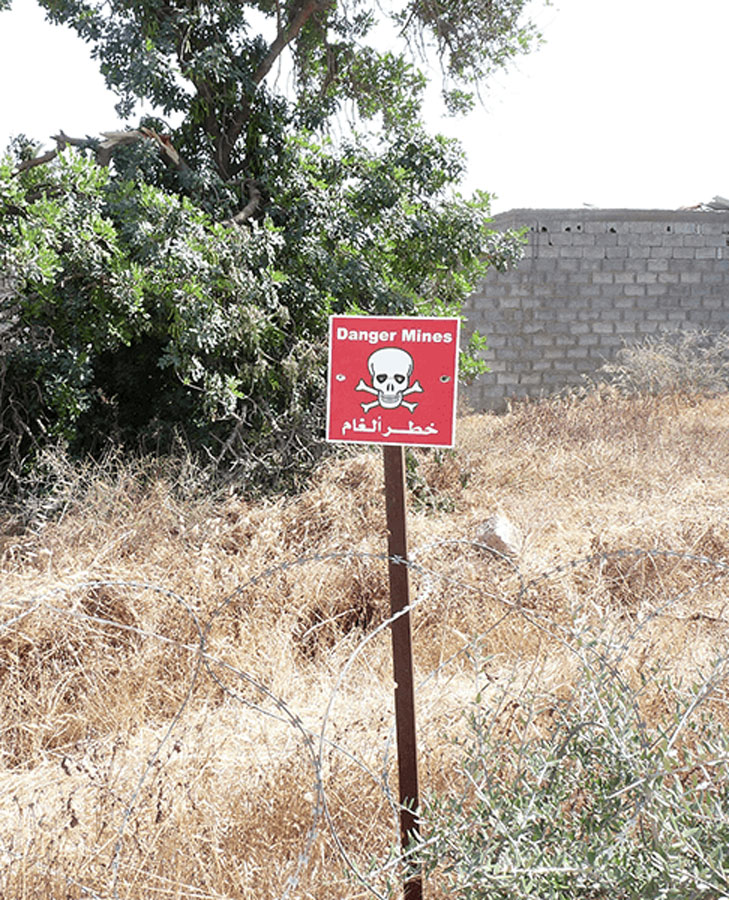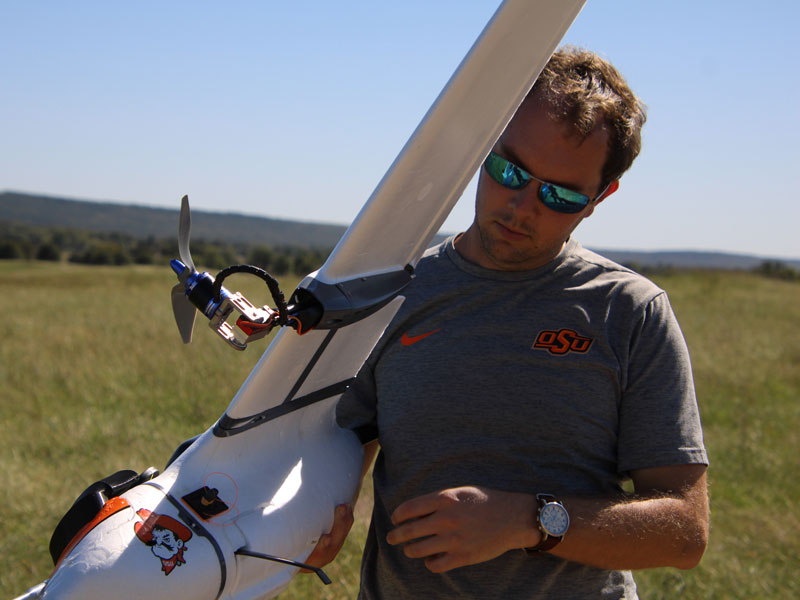
Institutes join forces to battle ongoing issue
Monday, December 5, 2022
Media Contact: Kristi Wheeler | Manager, CEAT Marketing and Communications | 405-744-5831 | kristi.wheeler@okstate.edu
Thousands of people are killed or injured by unexploded ordnance every year.
The Unmanned Systems Research Institute (USRI) in the College of Engineering, Architecture and Technology has partnered with the Oklahoma State University Institute for Global Explosive Hazard Mitigation (IGEHM).

IGEHM is based on the OSU Center for Health Services campus in Tulsa, and offered its expertise in unmanned systems to help solve the global issue of detecting and disposing of unexploded ordnance.
IGEHM, which was formed in June 2021, aims to become a world leader in land mine mitigation, detection of unexploded ordnance and post-conflict trauma support. Its goal is to become a hub for expertise and knowledge both in the United States and beyond.
“As former EODs or bomb technicians, we all feel like this is our mission, our calling and a way to give back,” said Dr. John Frucci, director of IGEHM. “Innocent civilians and bomb disposal operators are impacted daily by remnants of war. We want to help fix that.”
The act of bomb detection and disposal is a tedious and expensive endeavor. The development of technology to expedite and improve this dangerous mission has, until recently, been a slow process.
“At the current rate of detection and disposal, it could take 1,000 years to clear all unexploded ordnance and remnants of war,” Frucci said. “That’s why we’ve developed partnerships with leaders and experts, like USRI, to help develop new technology to make this faster and safer for the operators in the field.”
Dr. Jamey Jacob, the director of USRI, hopes that his teams’ expertise in unmanned systems can help develop detection, mapping and disposal technologies that will increase the safety and efficiency for operators around the world.

“We are able to adapt sensor technologies and vehicle configurations that we are very familiar with to this new area of focus without much need for new hardware development,” Jacob said.
The use of typical visual sensors, along with infrared and LIDAR technology will be extremely beneficial to creating a well-rounded view of an area, thus making it easier to detect, investigate and dispose of any anomalies or discovered ordnance.
Numerous regions around the globe are faced with the dangers of remnants of war and unexploded ordnance — none more prevalent and ongoing than the conflict in Ukraine. IGEHM and its partners are providing technical knowledge and other support to operators in the region facing unique detection, investigation and disposal situations created by the conflict.
“We’re doing what we can, within strict guidelines, to help in any way we can, for both our personnel and others directly impacted by the conflict,” Frucci said.
IGEHM hopes that partnerships, like the one with USRI, will help build a knowledge and information catalog that can be accessed by anyone around the world that needs help with detecting, identifying and disposing of any ordnance they may come across.
“This partnership exemplifies our land-grant and Tier 1 missions,” Jacob said. “This project, more so than any other project we’ve worked on, really embodies the spirit of doing good with drones.”
Photos: Provided
Story by: Jeff Hopper | IMPACT Magazine
